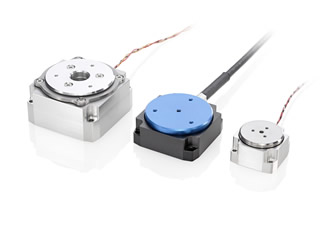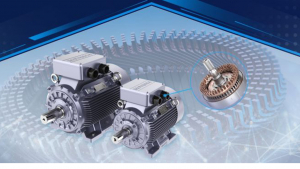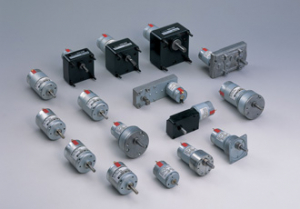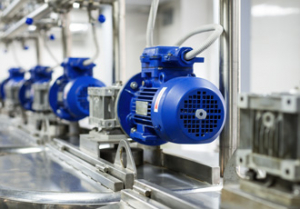Compact, Fast and Self-locking ultrasonic drives

The requirements on drive technology are subject to change. The use of mobile applications is increasing; medical and measuring devices or camera systems are getting smaller and smaller and their performance characteristics are improving continuously. Compact drive systems with a resolution and repeatability in the micro or nanometer range are therefore required both in the products themselves and when they are being manufactured. Piezo ultrasonic drives are a good alternative to classic stepper motors or motor-spindle combinations. As practical OEM solution, it is possible to integrate them easily into a variety of different applications. Typical areas of application include automation tasks in precision mechanics as well as motorization of mobile measuring devices and also for adjustment in optomechanics or microscopy.
he choice of a suitable drive can be a decisive factor for device manufacturers who want to distinguish themselves from the competition. Numerous factors influence this choice: The space available for installation, the velocity and acceleration required as well as the necessary positioning accuracy, power consumption and, last but not least, the reliability. As requirements increase, piezo ultrasonic motors can be a real alternative to the classic direct current or stepper motor-spindle combination. The PILine ultrasonic motors (image 1) from the product range of PI (Physik Instrumente) in Karlsruhe (PI, compare to company box) for example, work according to a simple principle and are characterized by their compact design. Compared to classic drive solutions, they offer greater drive and holding forces in the same installation space as well as extremely high velocities and accelerations. The drives dispense with the mechanical complexity of classic motor-spindle combinations in favor of costs and reliability. These components can be very susceptible to wear, especially in miniaturized systems. Furthermore, the operating principle allows PILine motors to be easily integrated into a variety of different applications.
Reliable Drive for Linear or Rotary Motion
An integral part of the ultrasonic piezomotor is a piezo actuator that is preloaded against a movable, guided runner (image 2). The actuator is stimulated to ultrasonic oscillation by a high-frequency alternating voltage between 100 and 200 kHz, which leads to periodic motion of the coupling element to the runner. The feed created by this is just a few nanometers per cycle and the high frequencies ensure high velocities. This principle also allows realization of rotary motion. When for example, the piezoceramic actuators act laterally on a ring-shaped runner, they create rapid rotary motion (image 3). The holding torques generated in this way are approximately 0.3 Nm. Ring-shaped actuators can be used for small rotation stages (image 4).
In every case, pretensioning the piezo ceramic actuator against the runner ensures self-locking of the drive when at rest and powered down. As a result, it does not consume any power, does not heat up, and keeps the position mechanically stable. In the case of classic direct drives, a brake is necessary that also requires installation space and therefore increases the number of necessary components by one. As a result, applications with a low duty cycle that are battery operated or sensitive to heat and where limited installation space is available, benefit from the features of ultrasonic motors, which are also very reliable: The motion of the piezoceramic actuator is based on crystalline effects and there is no wear. Only the coupling to the runner is subject to certain friction effects. Depending on the operating mode, ultrasonic motors are able to reach running distances of more than 500 km
Automation in Precision Mechanics and Mobile Measuring Devices
The small, fast-response as well as affordable ultrasonic piezomotors are therefore particularly suitable for applications aside of continuous operation. A typical example of this would be mobile measuring or medical devices. Due to their self-locking, the target position does not have to be held by additional brakes or electrical currents as in the case of magnetic drives. In addition, they operate free of noise. Image 5 shows how a mobile pump for dispensing medication can be set up: The motor consists of a piezoelectric ring (actuator). This actuator is stimulated in such a way that a so-called standing wave is generated. The thin aluminum oxide rings (top and bottom) sitting on the piezo ring absorb the oscillation. With the help of three coupling elements, the oscillation absorbed is transmitted to the preloaded rotor and converted to rotary motion. The ring-shaped piezo ultrasonic drives move the disk. Thanks to the special geometry of the construction, it is possible to dispense different quantities of medication.
Improved Drives for Positioning Optical Components
Similar arguments endorse the use of easy-to-integrate ultrasonic drives for positioning optical components, e.g, for laser beam steering or positioning the measuring optics. In the case of mobile, geodetic measuring systems for example, they can increase performance considerably. The motion created by the respective drive of the measuring optics is both horizontal and vertical. The objective was to improve these drives in order to achieve higher velocities, shorter positioning times and the highest possible accuracy when positioning the measuring optics. The arguments against a classic solution with gear-driven DC motors were their typical weaknesses such as wear on the mechanical components or generation of noise when monitoring measurements in residential areas or at inner city locations. An additional argument against a solution with magnetic direct drive was the lack of the mechanical holding torque necessary for precision measurement where energy cannot be efficiently generated during mobile use.
In comparison, a direct drive with piezo ultrasonic motor offers high reliability, is maintenance free, operates at temperatures between -20 °C and +50 °C, and is noiseless as well as self-locking. The rotary motion of the direct drive is created by two ultrasonic motors that are preloaded tangentially against a ring-shaped runner (image 6). The runner is pivot mounted. This preloading locks the drive when at rest so the positional jitter experienced with magnet-based direct drives does not occur here. This solution allows velocities of at least 180°/s, which have not been achieved until now and are four times the previous values, as well as the high accelerations of at least 360°/s². The drive also offers an improved start and stop behavior and at the same time, a higher resolution and low power consumption. In addition to the short positioning times and the required positioning accuracy, it sets new standards for angle and distance measuring.
The same also applies to many other applications where optical components need to be positioned, such as those in surveillance cameras, night vision devices etc. A typical advantage of piezos here is often noiseless and fast focusing. For example, biotreatment, microscopy position stages or packaging solutions for silicon photonics are further fields of application where the small size, fast response and reliability of the drive are important.
The Electronics are also Adapted
Of course, suitable drive electronics and servo controllers are also available for the ultrasonic motors. They can be easily integrated into the respective application as board solution or chip (image 7). The user can also rely on expert advice from PI when selecting the piezomotor. The complete circuit layout for example, is also supplied for the control chip.
It can be expected that piezo ultrasonic motors will play an important role in solutions for a variety of application fields and therefore be the driving force behind a large number of different technologies. Even those who need much higher forces and even better resolutions will find piezo-based drive concepts worthy of consideration. NEXACT® stepping drives for example, offer nanometer resolution at velocities up to 10 mm/s, whereas NEXLINE drives, which are also based on piezo stepping elements, are designed for generating high forces. PIShift piezoelectric inertia drives save space, are affordable and offer relatively high holding forces as well as a virtually unlimited travel range at resolutions in a range smaller than 1 nm.
Similar articles
More from Physik Instrumente (PI) GmbH & Co. KG
- Individual service for high-end positioning systems 6th February 2018
- Catalogue for alignment of optics and SiP 30th January 2018
- Compact linear stage driven by three-phase linear motor 5th January 2018
- Don't let the shakes ruin your selfie 13th November 2017












Write a comment
No comments